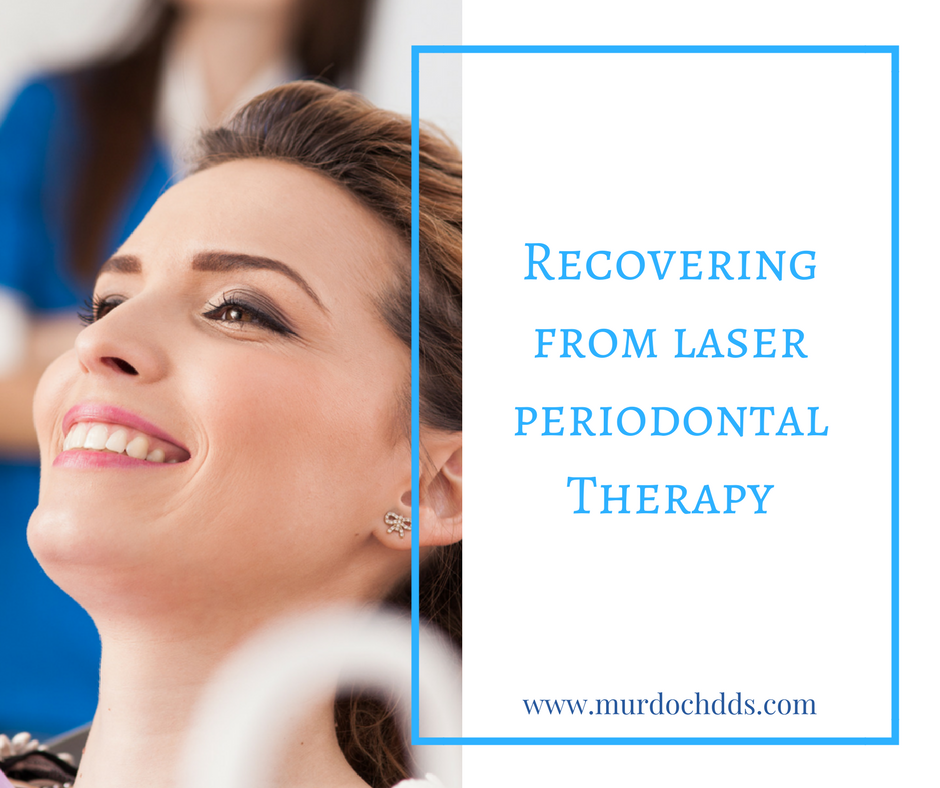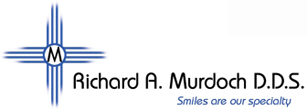Recovering from Laser Periodontal Therapy

Laser periodontal therapy is a fantastic option for treating periodontal disease in dental patients. Its precision and accuracy, combined with reduced bleeding and swelling (compared to traditional treatment options) make it a safe and effective choice for most patients. In addition, recovery time is generally shorter. However, there are some steps to take to ensure a smooth recovery period following laser periodontal therapy:
Be Prepared for Post-Therapy Changes
After periodontal therapy, it is completely normal to experience temporary color changes to the tissues that were involved in the therapy. They may appear red, blue, yellow, or purple. It is also normal to experience light bleeding or swelling, tooth sensitivity, or a “medicinal taste.” You may apply an ice pack to the area for 20 minutes every hour to help with swelling. If bleeding or swelling become excessive, if you experience prolonged / severe pain, or if you have persistent / elevated temperature, contact your dentist.
Take It Easy for Awhile
When it comes to recovery, rest is best. Reduce your activity for a little while after your therapy. You should at least take the rest of the day off to recover. One of the greatest benefits of laser periodontal therapy is the quick recovery time, but that doesn’t mean you should go for a five- mile run after you leave the dentist. Your body is still healing, and will need a little down-time.
Stay Hydrated and Eat for Recovery
You’ll need to really keep an eye on fluid intact following your therapy. Your body will need to stay hydrated to heal properly. In addition, you’ll need to make sure you’re getting enough nutrients to enable recovery, but you’ll need to follow a specific food plan to make sure your body’s initial healing process isn’t interrupted by trauma caused by chewing the wrong foods. For the first three days, follow a liquid diet to prevent the early clots that form to heal the tissue from being disrupted. Don’t drink through a straw, as the “vacuum” caused by doing so can also damage the clots. You can move up to “mushy” foods for the next four days, such as jello, pudding, cottage cheese, or mashed potatoes. The second week, you can add in soft foods like pasta or fish. Even after those first two weeks, you will still be healing, so be mindful and go easy on your mouth. It is very important to take your multivitamins during the healing process.
Stay Away From Hard, Chewy Foods For Awhile
Anything that requires aggressive chewing—nuts, gum, candy, tough meat, chips, or seeds should be avoided for awhile. These can disrupt healing or get lodged in the tissues that are trying to repair themselves. It’s also a good idea to stay away from hot (spicy) foods until you’ve healed.
Keep Your Mouth Clean
It’s crucial that you keep your mouth very clean after therapy. You can rinse your mouth follow- ing your therapy with warm salt water every three hours, and your dentist may also recommend a specific rinse to use twice daily. You should also take care to keep your mouth very clean by brushing and flossing except in the area where you were treated. You will need to give this area a little extra time before brushing it, typically at least a week (and two weeks before flossing.) Your dentist can give you specific instructions. Avoid putting pressure on the area that was treated.
If you take good care of your mouth following your therapy, you will start to heal quickly. Your dentist can guide you with specific care instructions, appropriate to the severity of your treatment. If you have any concerns or unusual symptoms following therapy, you should contact your dentist for further instructions. To learn more about Invisalign and other options for tooth straightening for adults, visit https://murdochdds.com/
Dr. Richard Murdoch proudly serves patients in Centennial and Denver, Colorado.
July 24, 2017
